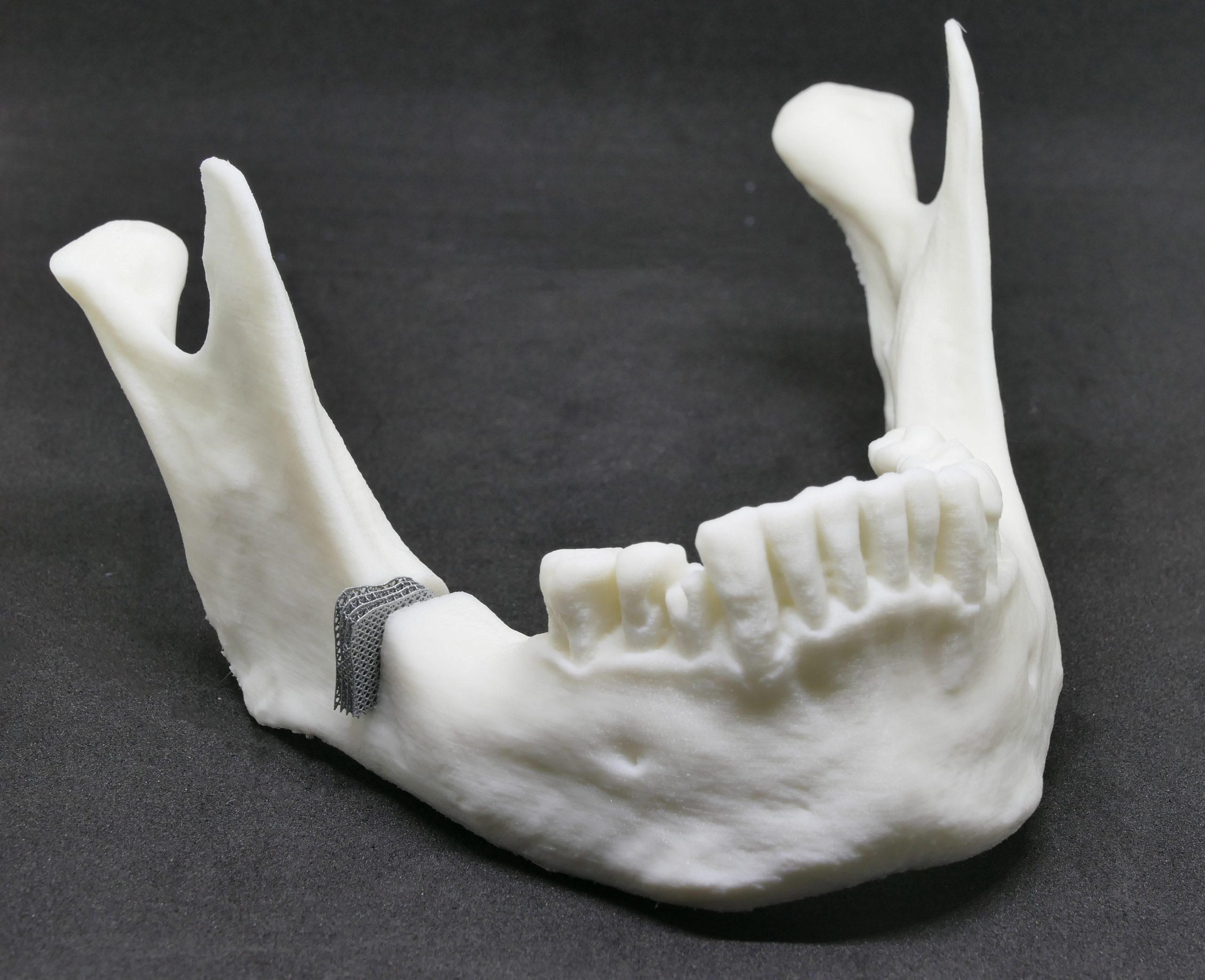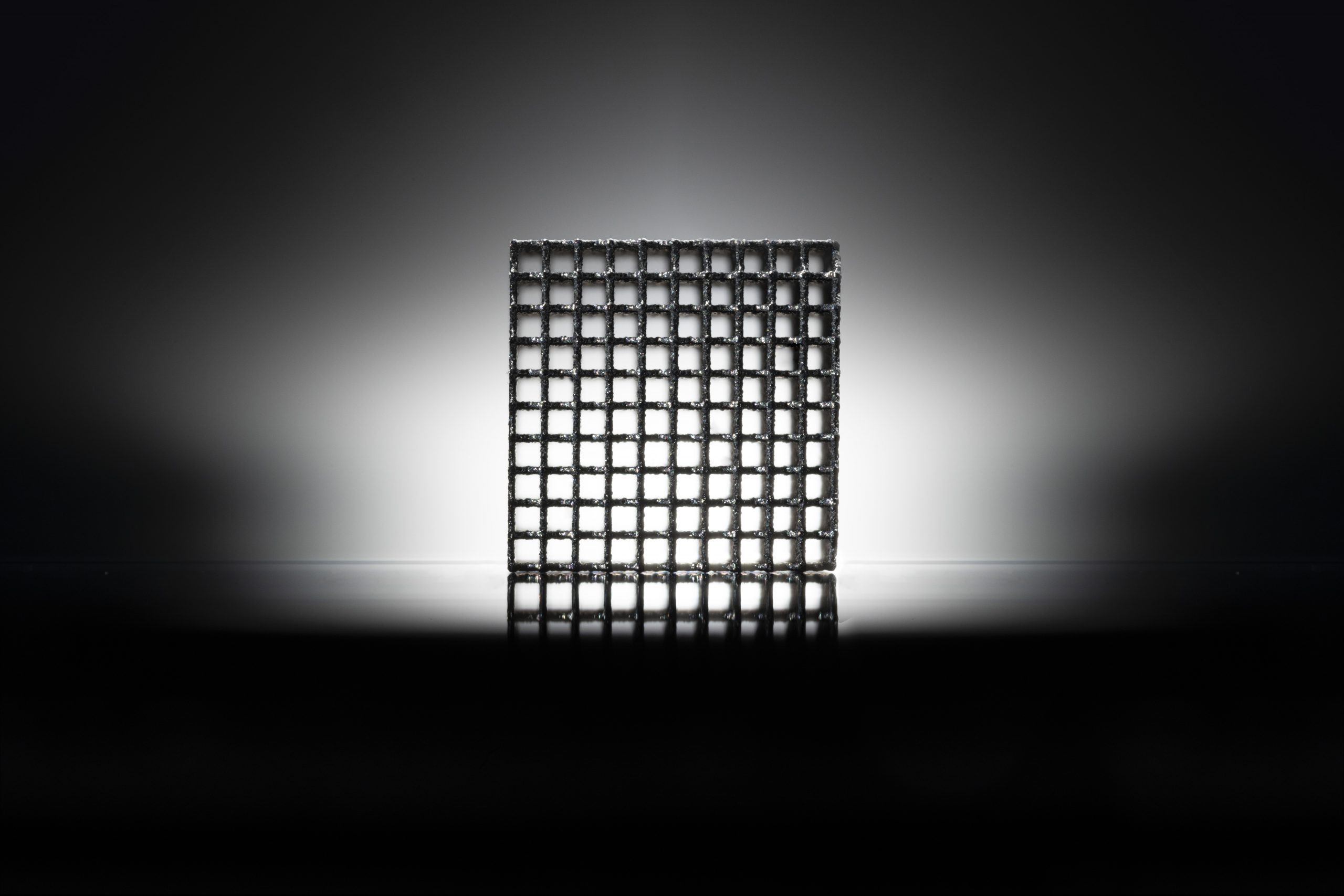As part of the BioStruct project, the RWTH Aachen University Chair Digital Additive Production DAP is developing an Additive Manufacturing process for a novel zinc-magnesium alloy composition in combination with innovative lattice structures that can only be produced using Laser Powder Bed Fusion (LPBF). The goal of the project is to research implants that can be resorbed by the body and are adapted to the individual requirements of the patient, thus promoting an optimized healing process.
The project results will be transferred to the reACT Alliance, which has already started its interdisciplinary research on the implants of the future in the second half of 2022.
Permanent implants made from titanium or surgical steels and autologous bone grafts, which are transplants made from the patient’s own bones, are among the most commonly used solutions for treating bone defects. However, they can only partially meet the complex requirements for a patient-friendly healing process. The mechanical properties of permanent implants lead to reduced stress on surrounding bone tissue, weakening it and increasing the risk of refracture, and the bone tissue itself does not heal. Additionally, prolonged retention of implants in the body increases the risk of further surgical intervention, especially in an aging population. Although autologous bone transplants promote self-healing of surrounding bone tissue and therefore lead to optimal treatment results, they can only be used for a certain volume of defects. To this day, so-called critical-size bone defects pose a complex medical problem: due to the large missing bone volume and the distance between any free bone ends, the bone cannot heal on its own in these defects. With that in mind, the partners of the BioStruct consortium are developing a bioresorbable implant concept whose material properties and geometric design meet the complex requirements of patient-friendly bone healing. The challenge lies in the selection of suitable and processable materials and geometries, both for the body and for processing using the Laser Powder Bed Fusion (LPBF) additive manufacturing technology, which makes the concept feasible in the first place.
Zinc, magnesium, or both?

In particular, zinc and magnesium alloys show promising results in the field of resorbable bone implants. In the context of alloy development of bioresorbable metallic alloys, pure zinc (Zn) is characterized by good degradation properties in the human body. However, its mechanical strength is not sufficient for use as an implant. Magnesium (Mg), on the other hand, is already used as a material for the manufacture of implants, such as in foot surgery, due to its bone-like mechanical properties. However, it degrades too quickly in the body in special applications, and gas formation can occur in the moist environment of the tissue. For this reason, the researchers are investigating different alloy compositions of these pure metals to effectively combine the properties of both for use in the body as well as processability by LPBF.
Algorithmic design for patient-specific implants
LPBF provides completely new design possibilities for the design of implants to further meet patient-specific requirements, such as mechanical stress and corrosion behaviour at the site of application. The innovative approach lies in an algorithmic lattice structure design: Based on the defined requirements, geometry and arrangement of the individual struts or lattice cells are generated parametrically, the resulting lattice structure is adapted to the bone defect site and prepared for production using LPBF. The strut diameter is an important parameter in this context. Adjustments to the lattice structure design allow for uniform corrosion throughout the entire component, as well as the flushing out of degradation products and the simultaneous ingrowth of tissue as the implant is absorbed by the body.
First demonstrator production successful

© RWTH DAP / Irrmischer.
In their research, the scientists were able to achieve grain refinement and targeted microstructure adjustment by adding small amounts of magnesium to zinc. In a wide-ranging alloy screening of different compositions, from pure zinc to a Zn8Mg alloy, the ZnMg alloy with ≤ 1 wt-% magnesium showed the best properties for use as a bone replacement product. A first demonstrator in the form of a lattice-structured jawbone implant was successfully and reproducibly manufactured from this ZnMg alloy. The strut diameter of the lattice structure used in the demonstrator is 200 μm. Additional structures were manufactured via LPBF for investigations of the biocompatibility of ZnMg. In the future, these structures are intended to form a stable framework for the infiltration of materials such as collagen or fibroin, enabling directed bone growth.
Remember, you can post free of charge job opportunities in the AM Industry on 3D ADEPT Media or look for a job via our job board. Make sure to follow us on our social networks and subscribe to our weekly newsletter : Facebook, Twitter, LinkedIn & Instagram ! If you want to be featured in the next issue of our digital magazine or if you hear a story that needs to be heard, make sure to send it to contact@3dadept.com





